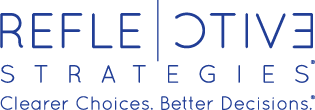Are you confident that you're really hearing what your customers are telling you?
Ask yourself:
Which customers should you be talking to? Have you segmented them in ways that help you understand unique reactions to your value proposition, target improvements to better meet their needs, and evaluate progress?
Do you use any closed loop assessment tools to elicit actionable insights from customers about how you can better meet their needs than competitors can? Do you have a baseline of customer loyalty or satisfaction against which to assess and report progress in the months and years to come?
What do your reference customers (i.e., those willing to provide testimonials) say about your performance? Do you have customers review loyalty data and help you make improvements?
Do anecdotal data—from front-line employees, call center encounters, pulse polls like Foresee, and your own site visits—corroborate your quantified findings? If not, where do they diverge and why?
Are you willing to view customer improvements as a long-term process, seek continuous feedback, and measure longitudinal progress? If so, what questions should you embed in your organization’s daily interactions with your most loyal customers? If not, how will you explain this decision when stakeholders ask about your lack of actionable insights into continuing customer dissatisfaction?
Is a single executive in your organization responsible for amplifying the voice of the customer? If so, does that person have enough positional power to influence strategies and resource allocations?
Can you match any improvements in the customer experience with specific drivers of customer loyalty? Can you quantify the impact of improvements (e.g., on revenues, profits, growth) in ways that your employees, investors, and fiduciaries would consider legitimate?


